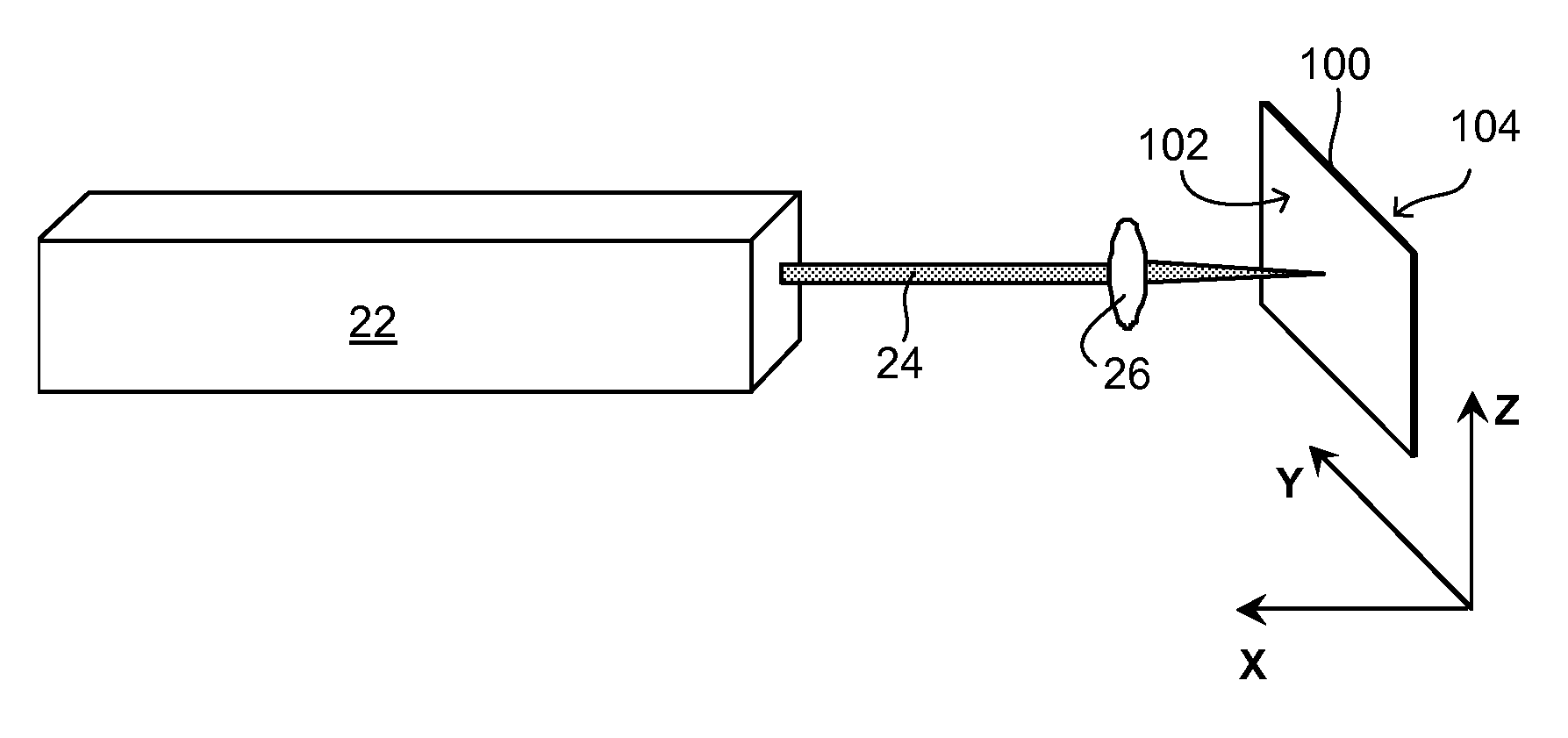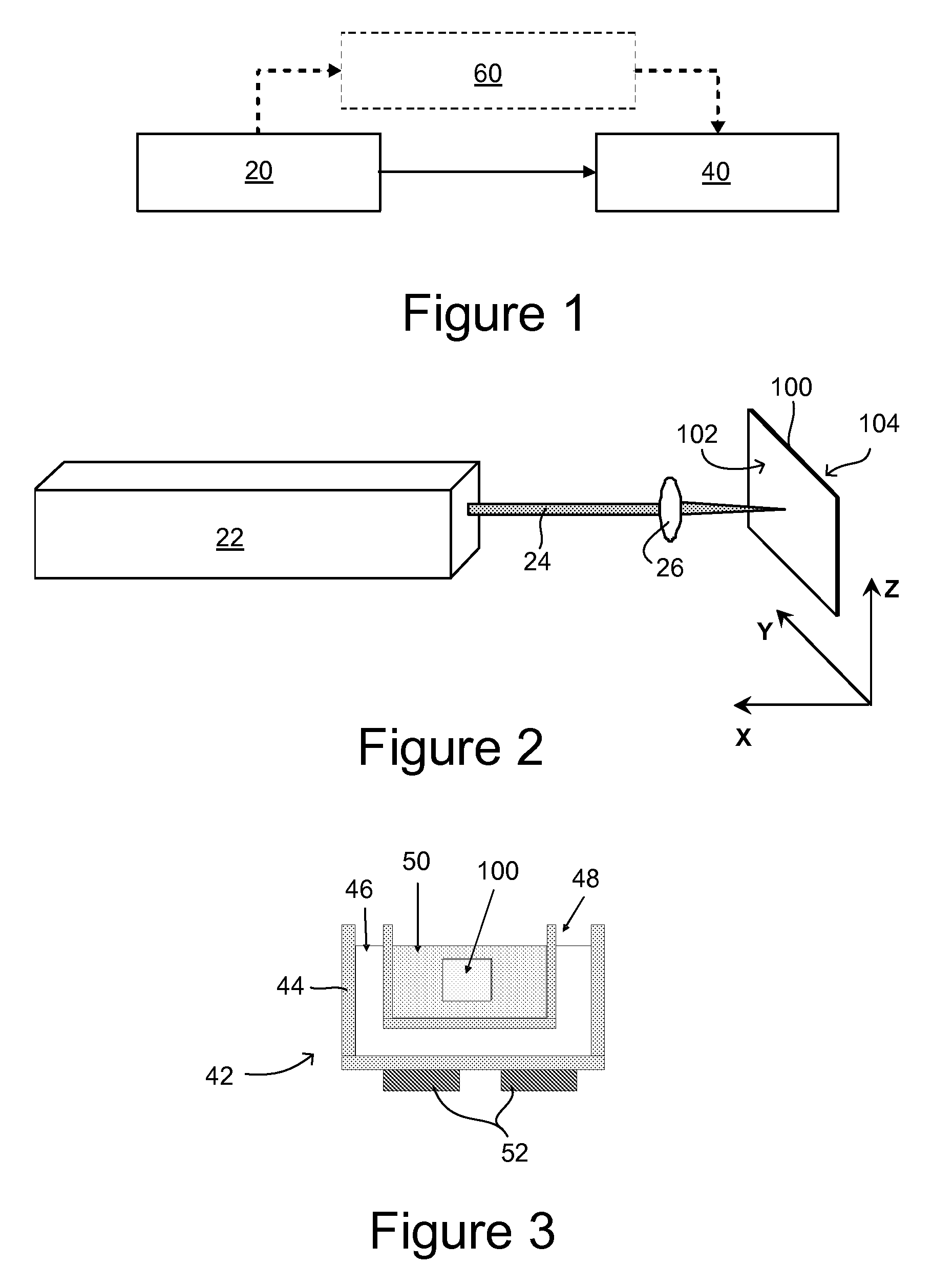Methods of forming high-density arrays of holes in glass
a technology of high-density arrays and throughholes, which is applied in the direction of manufacturing tools, instruments, and semiconductor/solid-state device details, etc., can solve the problems of high cost and maintenance burden of femtosecond laser technology, and the laser exposure process is relatively slow, so as to achieve low cost and reliability, good positioning accuracy, and small diameter variation
- Summary
- Abstract
- Description
- Claims
- Application Information
AI Technical Summary
Benefits of technology
Problems solved by technology
Method used
Image
Examples
Embodiment Construction
[0023]According to one aspect of the present disclosure, holes of 200 μm or less diameter on a minimum pitch of not more than 300 μm, with variation in diameter limited to 10 μm or less, desirably 5 μm or less, and with placement (hole center) positional variation limited to 8 μm or less, desirably 4 μm or less, are formed in a thin sheet of glass, desirably less than 0.8 mm thick, preferably in the range of 0.1 to 0.63 mm thick. The thinnest or “waist” diameter of the holes is not less than 65% of the diameter of the opening at the surface, desirably not less than 80%.
[0024]These results and other beneficial results can be obtained by the methods of the present disclosure, which will be described with general reference to FIGS. 1-3. According to one embodiment of the method of fabricating a high-density array of holes in glass, the method comprises providing a glass piece 100 having a front surface 102, then irradiating the front surface of the glass piece 100 with a UV laser beam ...
PUM
| Property | Measurement | Unit |
|---|---|---|
| diameter | aaaaa | aaaaa |
| wavelength | aaaaa | aaaaa |
| wavelength | aaaaa | aaaaa |
Abstract
Description
Claims
Application Information
 Login to View More
Login to View More - R&D
- Intellectual Property
- Life Sciences
- Materials
- Tech Scout
- Unparalleled Data Quality
- Higher Quality Content
- 60% Fewer Hallucinations
Browse by: Latest US Patents, China's latest patents, Technical Efficacy Thesaurus, Application Domain, Technology Topic, Popular Technical Reports.
© 2025 PatSnap. All rights reserved.Legal|Privacy policy|Modern Slavery Act Transparency Statement|Sitemap|About US| Contact US: help@patsnap.com



